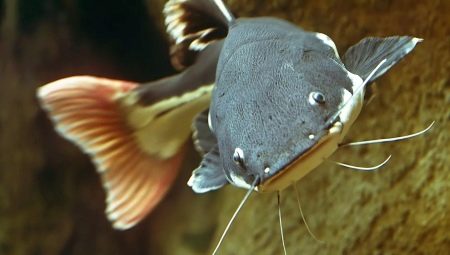Aquarium in the interior is a great way to diversify and revitalize the interior. When choosing its inhabitants, they usually focus on the size of the fish. If they should be extremely small, the choice usually falls on such representatives of akvamir as guppies, swordsmen, gourami, cyclides.
However, if the dimensions of the "fish house" allow you to have more living creatures, then catfish become an excellent option for settlement.
These fish live both in their natural habitat and in artificially created ones - including in aquariums. The assortment of the latter includes dozens of species, which allows you to find the most suitable individuals for yourself. In addition, they have many useful functions, which we will discuss below.
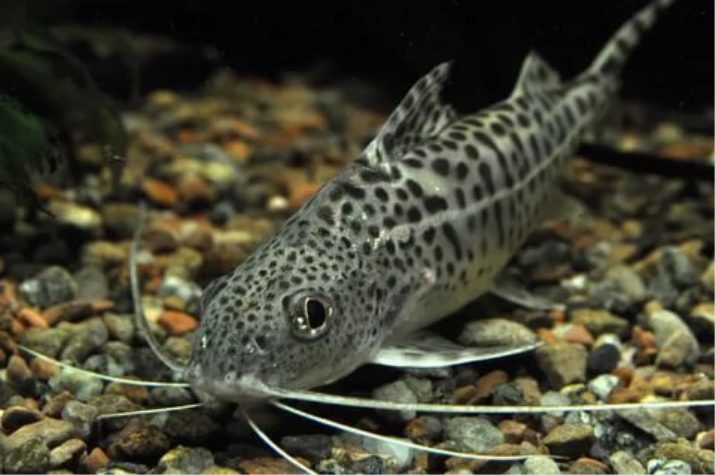
Fish Description
For people who are not dedicated to the intricacies of the aquarium world, all the fish are similar to each other and differ only in color, and their main purpose is to please the owner and decorate the atmosphere. In fact, they not only serve as interior decoration, but also perform different roles.
The catfish’s functions are truly important - they cleanse the aquarium of the waste products of its other inhabitants, as well as eat up the remains of food and excess algae.
In total, there are more than 1.5 thousand species of catfish, the sizes of which range from 2 cm to 5 m. Aquarium individuals make up a small part of this community; it numbers only a few dozen, but various specimens are also found inside it.
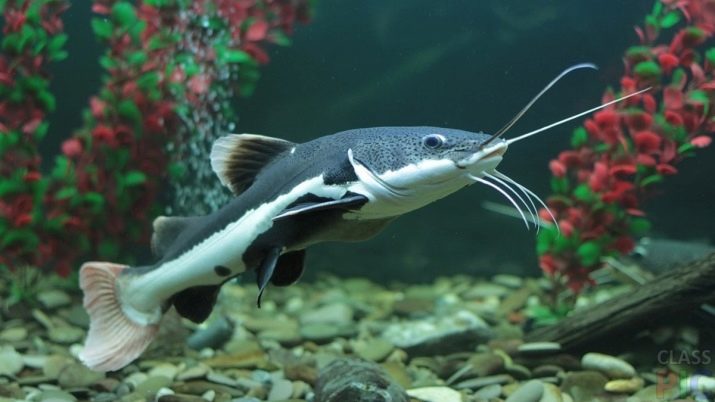
Few know that these friendly fish are predators. During the day, they prefer to be at the bottom, which means that comfortable living conditions should be created there. And you also have to take care of a suitable neighborhood for these fish so that they are not eaten and can comfortably coexist in one territory.
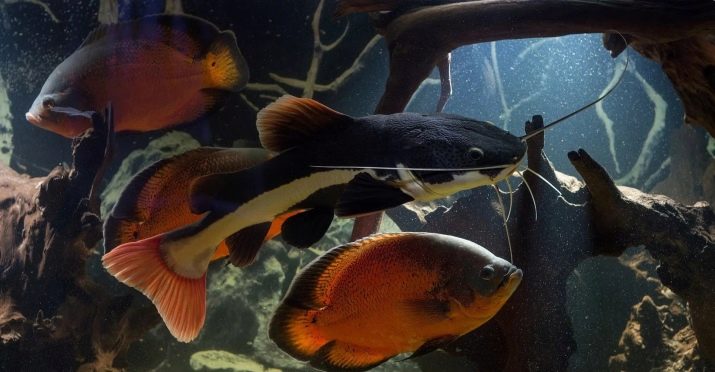
Instead of scales, catfish have a peculiar plate cover. Their mouth is a suction cup. With this anatomical feature, catfish can perfectly clean the aquarium. Breeders love these fish for the following qualities:
- peacefulness;
- lack of stringent requirements for hardness and water temperature;
- can live in water of medium acidity.
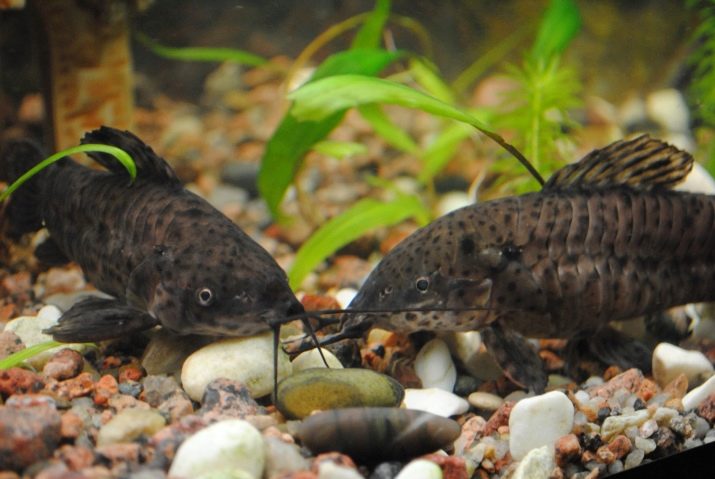
Som is characterized by intestinal breathing. The fish periodically rises to the surface to swallow air, and then lowers back and processes it into oxygen. These fish are happy to hide in thickets of algae, behind snags and other structures used in aquariums. Due to the species diversity, it’s hard not to get confused with the names, but true fans of their craft can reproduce even the most intricate “names” of their favorite fish.
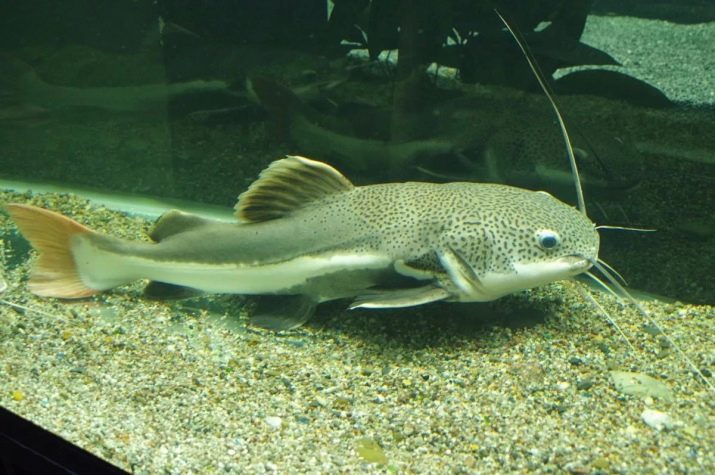
Somes have high endurance, so they are easy to maintain.
Due to the natural tendency to nocturnal lifestyle, it is better to feed these pets at a later time. In addition to the eyes, which are small in size, catfish have chemoreceptors located throughout the body for orientation in space. They give them the opportunity to catch the smells that are in the water, to touch objects. Because of the spikes of these inhabitants of the waters, picking up is dangerous, especially if it is poisonous.
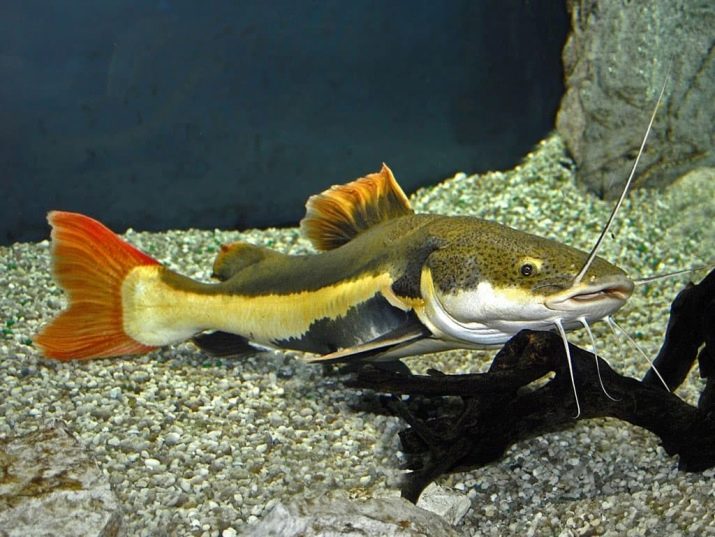
Representatives of the chain catfish family
This group includes 630 different types of catfish. Moreover, their gradation is complicated by the fact that to study all the representatives so far failed. In addition, there are loricaria catfish, which are difficult to clearly identify.
Their natural habitat is water bodies of South America with crystal clear water.
The variety of loricaria catfish suggests different colors and dimensions, but they are united by the presence of a powerful mouth-suction cup, which helps them to stay in place even with a strong current. The smallest of them otocinclus grow a little more than 2 centimeters, and pterygoplichitis up to 50 cm in length. We will tell you more about the bright representatives of the group.

Ototsinklus
Ototsinkljus perfectly cleans the aquarium and will be an ideal inhabitant for a vessel with numerous algae. Fish can have a length of 2.5 to 5 cm. If your tank has a capacity of about 50 liters, then 5 such fish will be enough for him.
A distinctive feature of the catfish is its dorsal fin, which in length often reaches 15 cm or more.
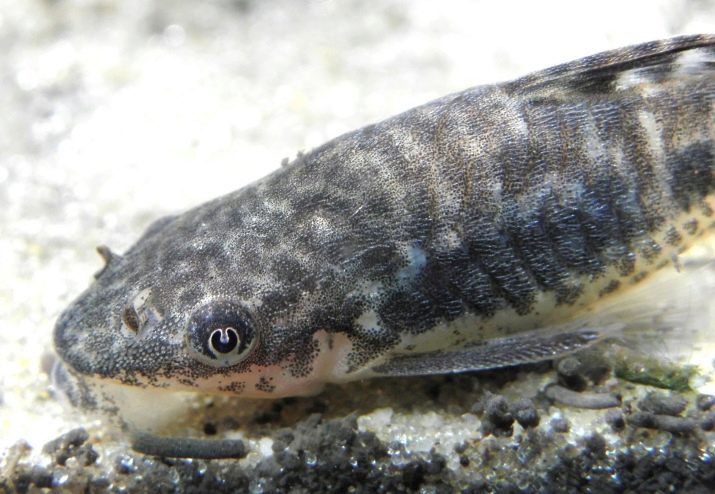
Brocade catfish
It belongs to pterigoplichtomas. This "pet" can happily absorb vegetation, it is well adjacent to many other aquarium inhabitants. With all the love of algae, sometimes at night their predatory nature wakes up in them, they begin to eat up the scales of slow fish. True, his housing needs are immodest - a pair of such catfish will need a 400 liter vessel. The snags laid at the bottom will become a source for the appearance of growths that the fish will eat.
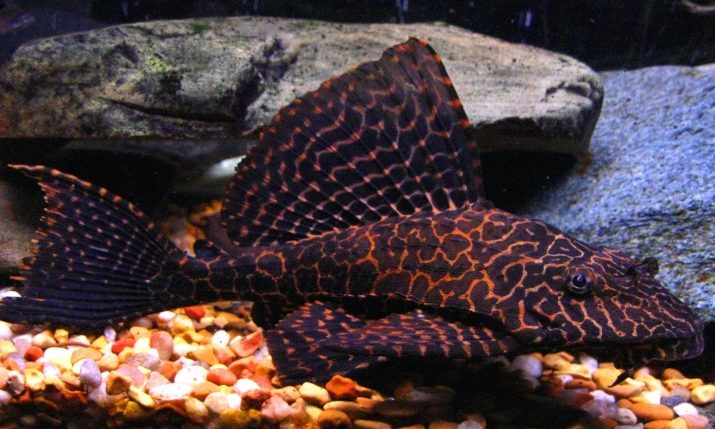
Antsistrus
These individuals are larger than the previous ones, ancistruses grow up to 10-14 centimeters. A characteristic distinguishing feature are growths of skin on the facial zone in males. A pair of antistruses requires a vessel with a volume of 80 liters or more. They do not require special conditions, therefore suitable as the first fish for beginners. In turn, this group is divided into many subspecies.
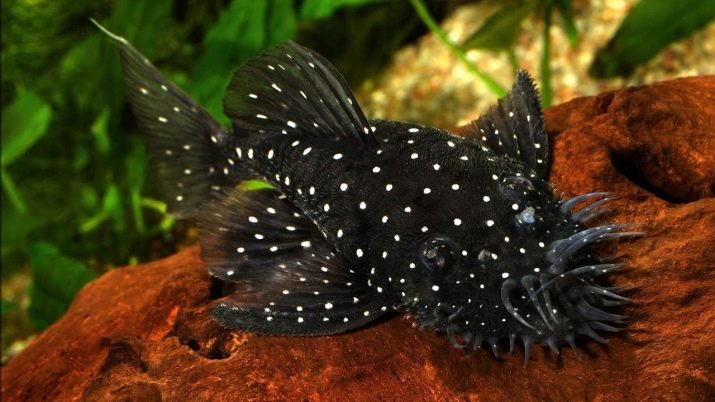
Albino
This is a pretty yellow fish with red eyes. They distinguish it from the usual yellow ancistrus. The immunity of this type of catfish is somewhat weakened due to the characteristics of the recessive color.
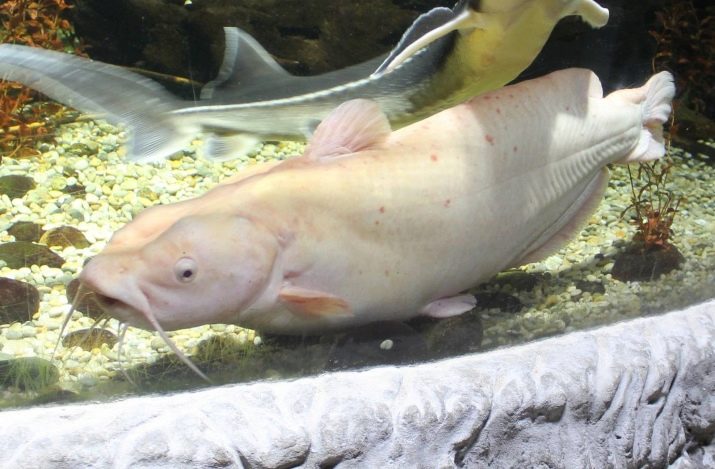
Star Antsistrus
His body has a darker color, which is also strewn with white dots, forming a pattern of "starry sky." The body length of this beautiful subspecies is about 9 cm.
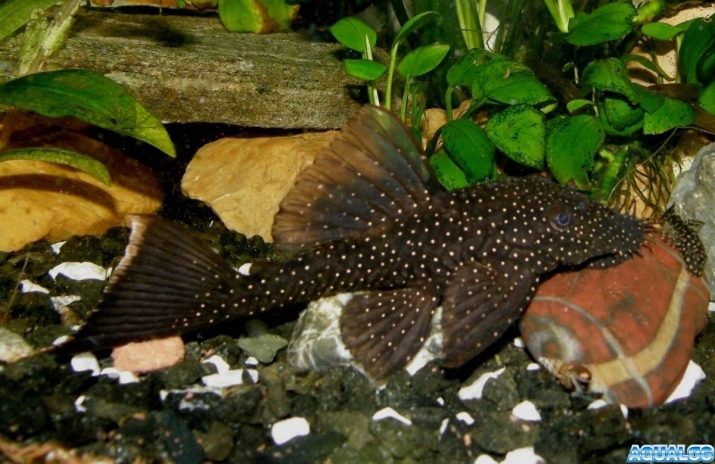
Pterigoplicht
On his half-meter body is a chic dorsal fin up to 15 centimeters. Such fish can afford to contain only with a very large aquarium.
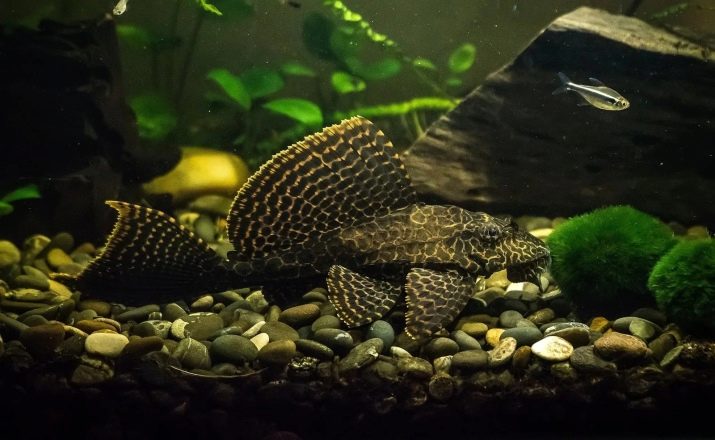
Gipancistrus
He loves to eat animal food. The variety of hyancystruses is great, but only six subspecies are officially named. One of the most popular hyancystruses is inspector (dark with light spots and dark fringing on the fins) and contrast (the same "star" color, but with monophonic fins). Fish grow up to a maximum of 10 cm.
Two adults need an aquarium from 100 liters for a comfortable existence.
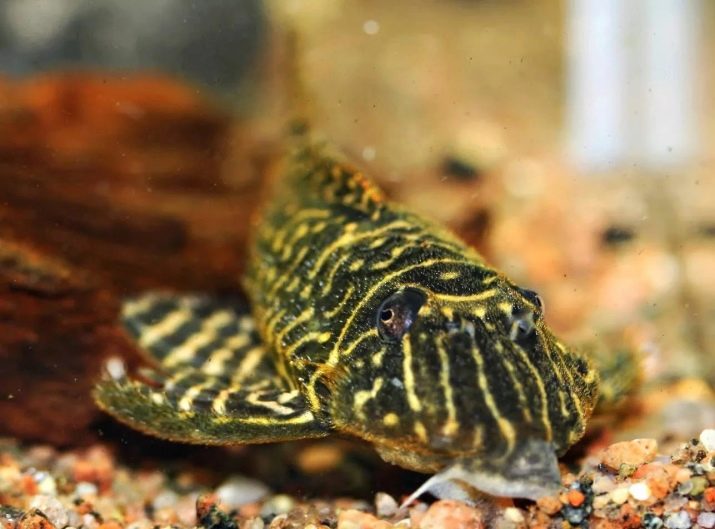
Individuals of the callicht group
The individuals of this group are also called shell-like; in total, it has about 150 species. The most common representatives of this species are the corridor and hoplosternum littoralis.
These fish eat any food and get along well with other inhabitants of the aquarium - they do not pay any attention to their neighbors.
WITHit is worth littering a vessel with small pebbles so that catfish can dig into it for their pleasure. At the same time, it must be supplemented with algae with a powerful root system so that the fish do not tear them off during their games. So that the plants probably were not torn, they need to be planted in special pots and masked in the aquarium with decor. Their natural habitat is the waters of South America. At home, 20 species of such catfish live. Varieties of corridors are widespread in Russia.
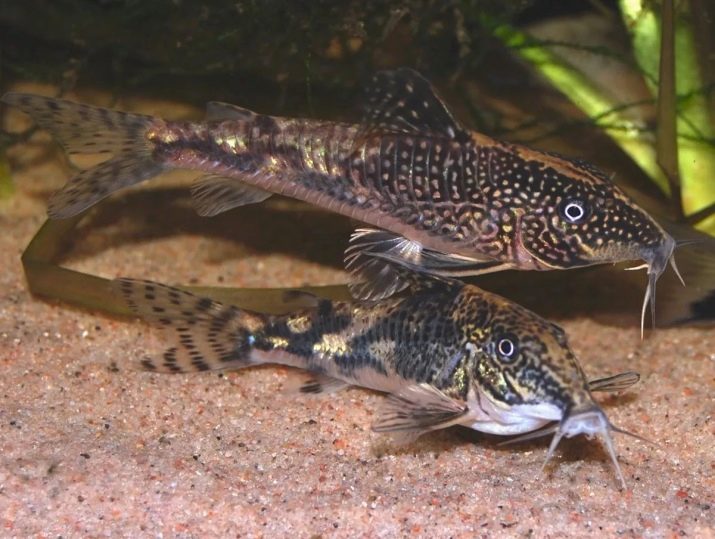
Catfish elegant
This beautiful aquarium fish was brought to the countries of the Old World from the Amazon, and in our country it came in the 60s of the last century. The body of this corridor has a very attractive color. On the head are visible small yellow spots and stripes. Catfish gills are cast in green, the areas behind the eyes are marked in the same color. The light yellow or olive hull has a dark streak at the back. The fins are practically not colored, except for the upper one, which has black spots.
They prefer to live in a flock and breed more willingly with this method of coexistence, even if their neighbors belong to other species.

Catfish speckled
It may be called calicht, but this is wrong, since there is another variety with the name that is officially assigned to it. Fish live in Brazil and, like their counterparts, gradually “conquered” Europe and Russia. The body length of females is 8 cm, and of males is 4–5 cm. The body of fish has a curved back and a relatively flat abdomen.
The male can be distinguished by the sharp fin on the back, and the female by the rounded fin. Their color also looks beautiful - olive sides, orange abdomen and dark back, as well as dark spots on the body.
The optimal conditions of detention can be called water from +15 to +20 degrees, while they tolerate its decrease by several degrees and increase to a mark of +30 degrees. They don’t like salt in water, so treating them this way is not worth it. To encourage them to reproduce, you need to increase the oxygen content in the water.

Cirrus species
This African group with a beautiful mustache is divided into 150 species of fish. They have a body a bit like a triangle, spiky fins, three pairs of antennae, two of which look like fringe. Many varieties are united by the name of the synodont. They can feel comfortable even in stagnant bodies of water such as swamps.
Thanks to the unusual manner of lying on their back, they are easy to distinguish from others. They prefer animal food and should not keep them next to wounded fish, as they will begin to eat their insides. Females are larger than males, have a denser constitution.
Regardless of the specific subspecies, this group is characterized by the presence of beautiful spots on the body.
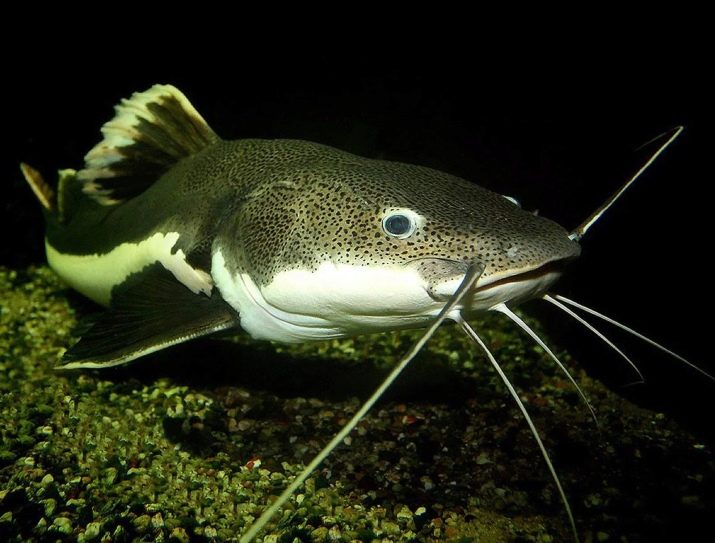
Black-bellied feathery catfish
He prefers rivers without turbulent currents, therefore his main area is calm branches of the Congo River.Small individuals 5 cm long have a beautiful color - a light cream body and dark with mother-of-pearl spots, the color darkens downward, and the belly is almost black. It is convenient for him to hunt on his back - he simply grabs flying insects or eats mouth-watering parts of water lilies.
Such coloring helps the black-bellied pinnate catfish to skillfully disguise itself from predators.
Usually, his brethren have a light belly and a dark top, his coloration is distributed in the opposite direction: the dark belly makes it invisible from a height for carnivorous birds, and dangerous fish do not see its light back from under the water column - it is lost against floating plants . He actively eats moth pupae.
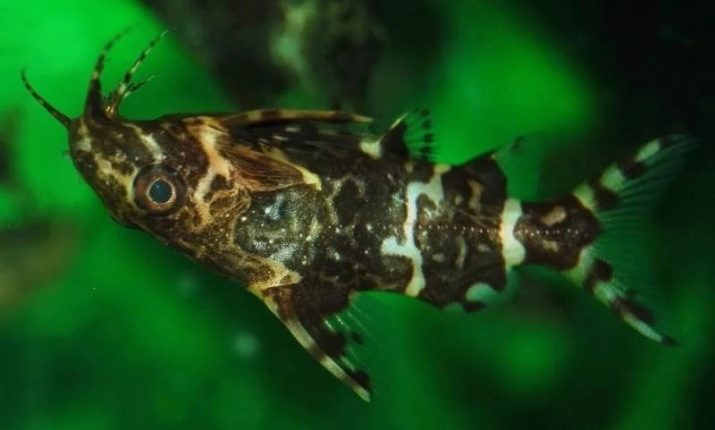
Multipoint Cirrus Catfish
The length of his body reaches 12 centimeters. The popularity of this spotted subspecies among aquarists is very high. He can take root well in a 40-liter aquarium. This beautiful synodontis, like the Dalmatian, is strewn with black dots that contrast markedly with its luminous body. For this distinguishing feature, some call it that. They were also called cuckoos, as they can toss eggs into other people's clutches. Besides, kleptoparasitism is inherent in them - these fish love to steal someone else's food or elements of shelter.
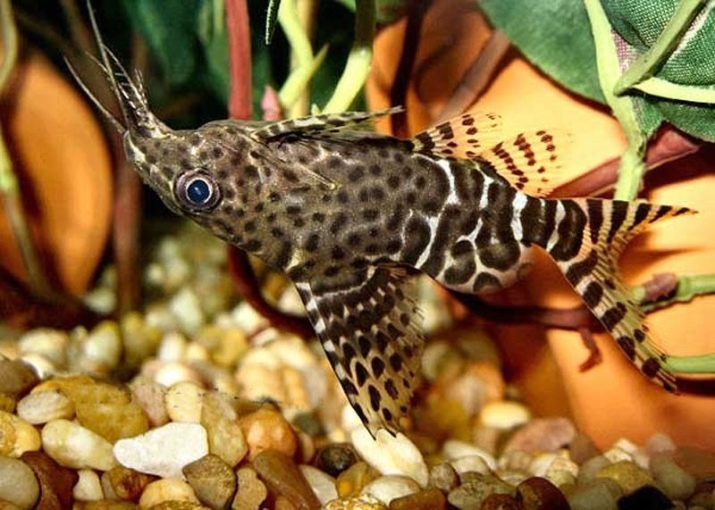
Angel
This species has light yellow dots on a dark background that resemble stars, as well as a very beautiful light fin on the back. This is a native of the waters of the Congo, Zaire and Cameroon, which has a size not small for aquarium fish - 18 cm. He is considered one of the most beautiful representatives of fringed, but he also needs the “royal” conditions - an aquarium containing 200 liters of water.
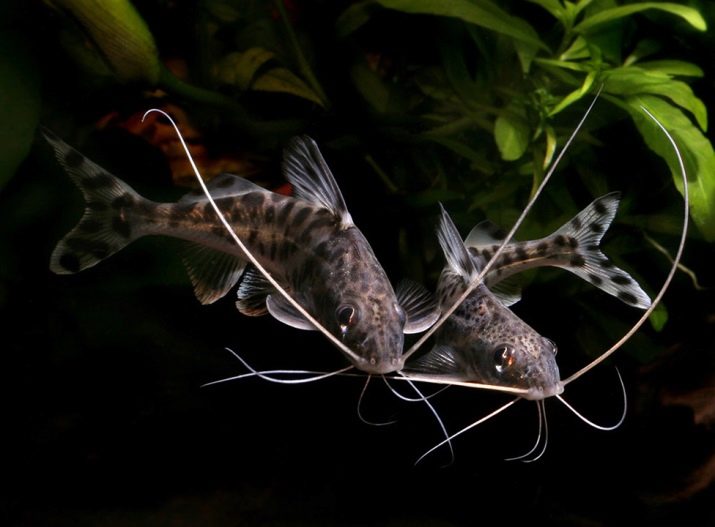
Armored catfish
The group of armored includes about 90 species of catfish. The rattle of their fins is quite loud. The dorsal and pectoral fins are notched, and the scales are stiff. If the water in the pond or aquarium is not very high quality, then the fish can get dropsy. It is treated with salt and methyl blue. They feel great in the Amazon, during climate fluctuations, including dry periods. These catfish perfectly adapt to the new environment and have good survival.
Armored can breathe air in the absence of fluid.
A solid fin on the chest helps them leave the dried area in a more fertile one. And they are also able to bury themselves in the ground in order to wait until the pond is again filled with moisture. So the fish are able to live up to two months, being in a state of slow metabolism. The scales of such a catfish, like the armor of a knight, protect it from the attacks of enemies. Poison can come out from the fins, which is not too dangerous, but can scare away predators. The mucus of these fish is also poisonous.
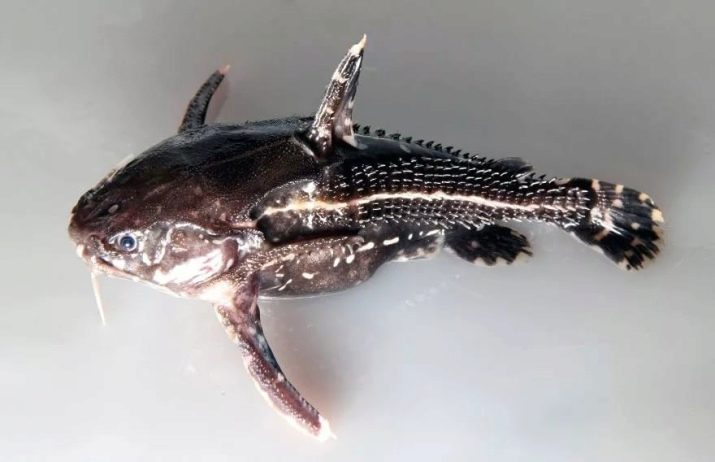
Due to the creaking sounds they make, these catfishes were called speaking. They coexist with other fish calmly. However, they cannot be called popular among aquarists, since their coloring is not as attractive as that of some of their brethren. And also these fish can poison other inhabitants of the aquarium, because in a stressful situation, for example, when cleaning the aquarium, they can emit toxins.

Platidoras striped
His second name is the singing catfish. It is very popular among aquarium fish breeders. Its dimensions are very impressive - up to 20 cm in length. He can destroy snails, and he will especially actively do this in a pack of his own kind.
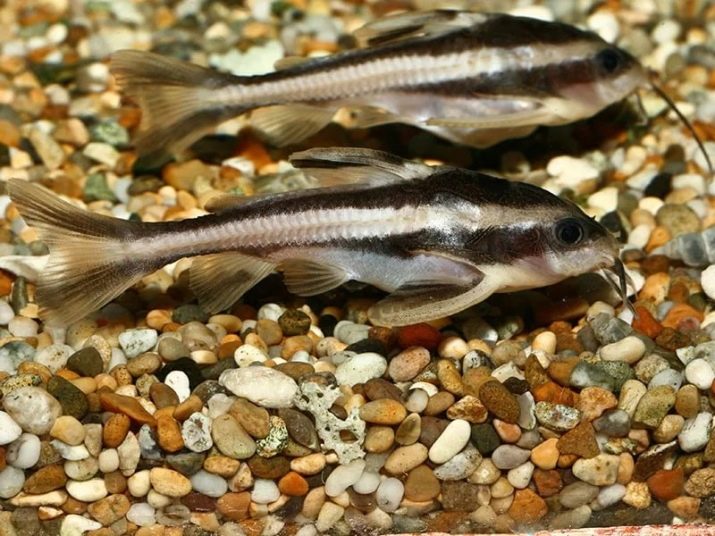
Agamyxis is stellate or white-spotted
It can often be found at breeders. It is in demand due to its pretty dark color with light “stars”. Peru is not the largest representative of the group, its body length can reach up to 14 cm. Like its relatives, he prefers to live in the company of other catfish.
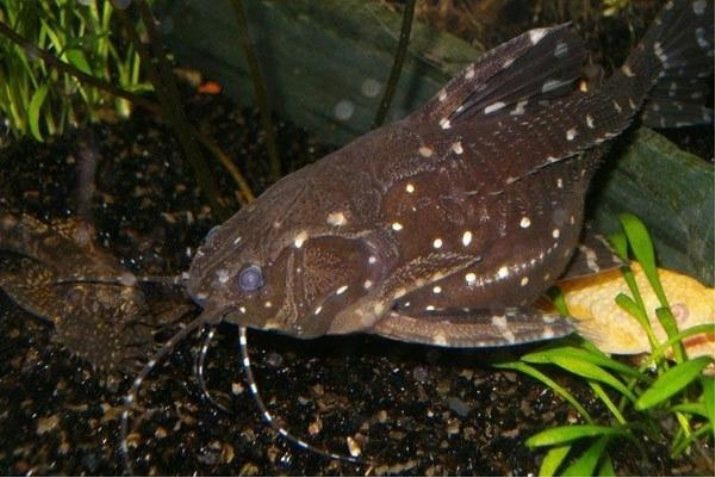
How to choose?
One or the other species of catfish come into fashion, and sometimes not just domesticated but well-forgotten old varieties become popular. But catfish at all times have been popular with both amateurs and aquarium experts. Some breeders acquire new individuals by simply walking around the zoo and stumbling upon an interesting specimen that is not yet in its collection. This is not the right approach, because ignorance of the features of a particular subspecies can lead to unfortunate consequences.
Different species have different characteristics. This is the required temperature of the water, and its acidity, and cohabitation with other aquatic organisms.
By purchasing a "pig in a poke", in the morning you can miss out on your favorite old fish or see what freshly bought catfish does not feel well in the new habitat.

Corridors and synodontis are very popular among aquarists in our country. But it’s important to know how big the fish you buy will grow.. So, the length of some synodontises reaches 30 cm, and this already suggests the need for a fairly large vessel for its maintenance. It is necessary to take into account several key points when buying a new catfish.
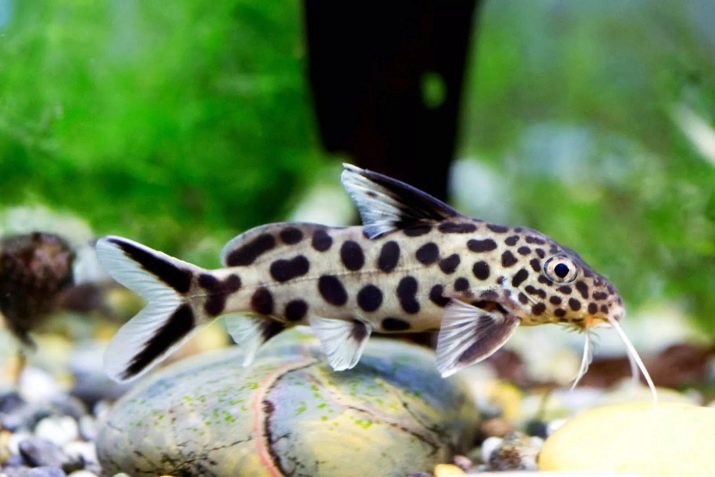
Behavior
If we consider the behavior of some subspecies, then it can be compared with a cataclysm. If you add catfish to an already populated aquarium, you need to choose it especially carefully. In addition, some subspecies can be easily confused with each other. So, the synodontis S. congica and S. Notata have a very similar appearance - a gray color with dark spots - but at the same time completely different temperaments.
The first fish behaves absolutely calmly and, most likely, gets along with the new company, but the second will terrorize its neighbors.
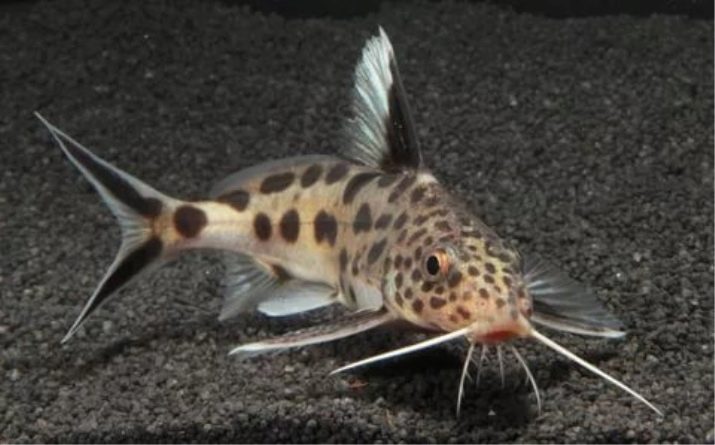
Food preferences
The importance of such a factor as predisposition to predation cannot be underestimated. For example, a very young red-tailed catfish 9 cm long can easily attack a fourteen-centimeter loricaria. Sure, he won’t eat it quickly, but in a few days he’ll be able to manage it.
It is not necessary to conduct experiments with a dubious neighborhood, so that previously purchased fish do not suffer from the insatiable catfish.
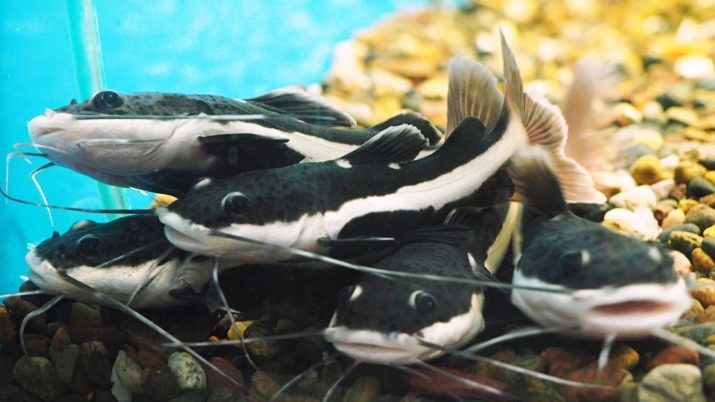
Dimensions
Usually at home they keep small catfish or those that reach a maximum size of 30 cm in length. But to assess growth prospects solely in appearance of a young fish is impossible.
For example, the same red-tailed catfish in childhood has dimensions up to 8 cm. Many visitors to pet stores like its color.
If the seller behaves in bad faith, and the buyer’s own knowledge is not enough, then over time he will receive almost a meter and a half fish. It is unlikely to turn him over to the zoo, then the fate of the fish will be very sad.
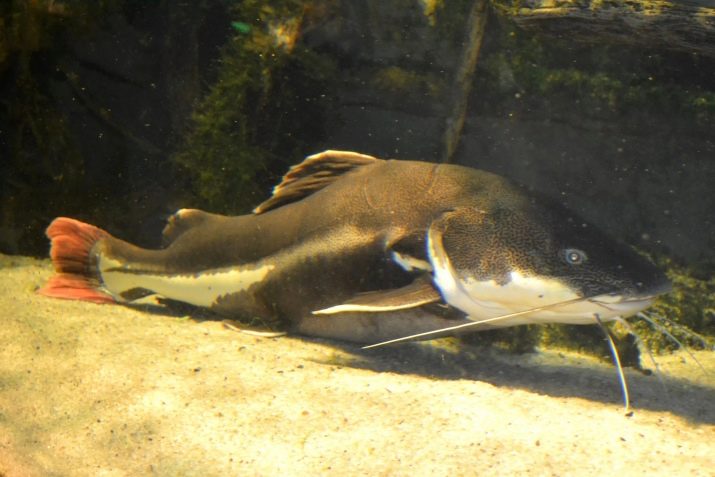
Physical form
Noticing signs of weakness, pain in the behavior of the proposed catfish, it is better not to make a purchase. Such cases are not uncommon, because resellers often work in bird markets, taking fish from breeders or even getting them from abroad. In the latter case the risk of “knocking down” the health of soma is very high, since transportation conditions may not meet the requirements.
Distinctive features of healthy catfish are saturated color without plaque corresponding to the breed, whole fins, the absence of visible damage to the body cover.
Most catfish have antennae, they should have a standard length and not bleed. Sometimes they may not exist at all, and if the breed provides for them, then this specimen obviously got damaged somewhere. Or the antennae deteriorated due to improper conditions of detention: when massively diluted, harmful nitrates and ammonia in excessive quantities may be added to the water.
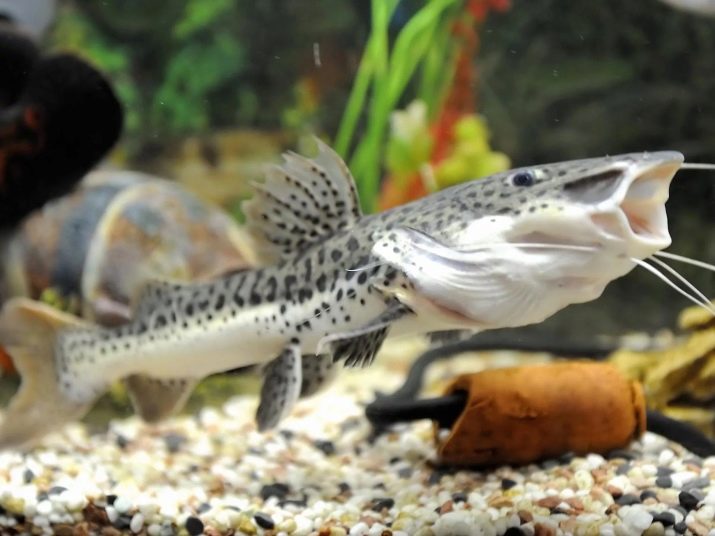
Carriage home
Today, special plastic bags with a large supply of oxygen are provided for fish. As for the catfish specifically, they need to be transported in double packets, and in the case of large-sized individuals, they should be triple at all. The reason for this is their sharp fins, which are capable of piercing thin plastic.The most reliable will be a plastic container - it is more likely to survive if a catfish enters it.
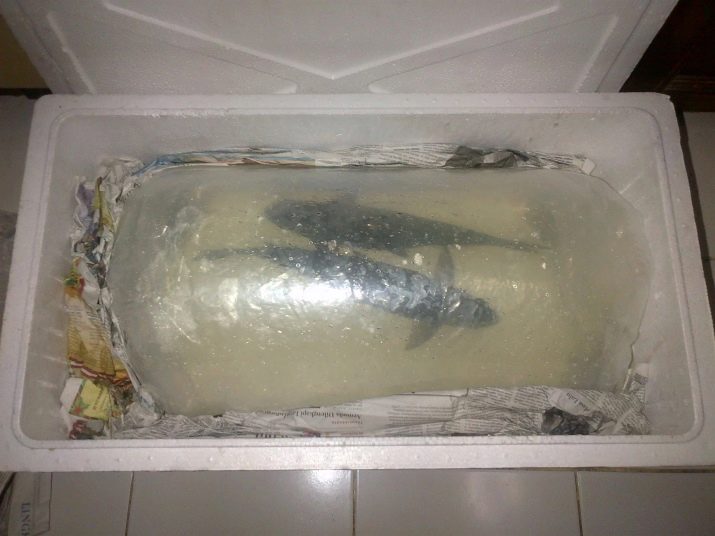
Catfish is a popular fish among amateur breeders and professionals. He becomes not just a pet, but also a real nurse of the aquarium - cleans it of the remnants of uneaten food and waste products of all its inhabitants.
Despite the predatory habits, he is peaceful, the main thing is to correctly select his neighbors, and some species should not be kept together with other hydrobionts.
Use all possible sources when choosing this "mustachioed pet" - this will allow you to avoid common mistakes and make the right choice.
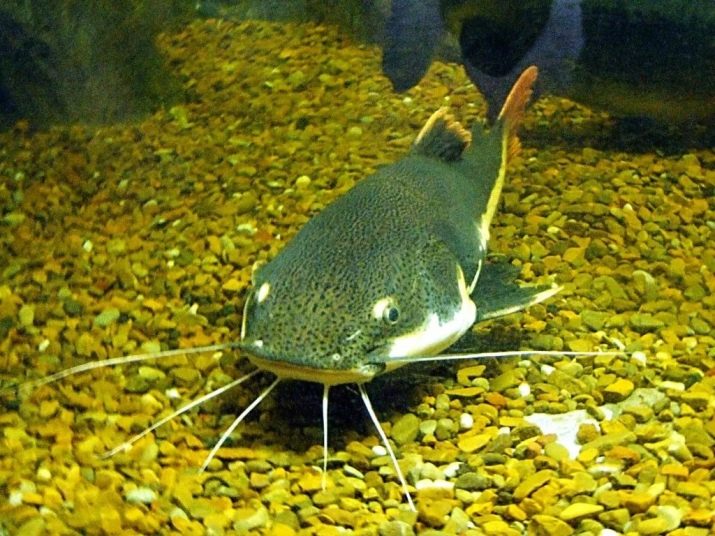
In the next video, you can watch how catfish hunt fish when placed in an aquarium without taking into account the compatibility of individuals.
